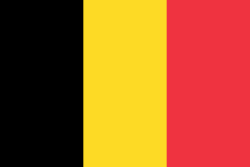Frank De Winne
| Frank De Winne | |
|---|---|
| ESA Astronaut | |
| Statsborger | Belgien |
| Nationalitet | |
| Status | Aktiv |
| Født | 25. april 1961 Gent, Belgien |
Andet arbejde | Testpilot |
| Uddannelses- sted | Det kongelige militærakademi |
Tid i rummet | 198 dage 17 timer 34 minutter |
| Udvælgelse | ESA-gruppen fra 1998 |
| Mission(er) | Soyuz TMA-1, Soyuz TM-34, Soyuz TMA-15, Expedition 20, Expedition 21 |
| Missionsemblemer | |
Frank De Winne (født 25. april 1961) er en belgisk officer og ESA-astronaut. Han er Belgiens anden person i rummet (efter Dirk Frimout). Han var den første ESA-astronaut til at lede en mission i rummet, hvor han fungerede som chef for ISS-ekspedition 21.
Han fik sin uddannelse på en flyveskole i Belgien. Efter sin eksamen fløj han med et Dassault Mirage 5 fly.
Han er vicomte og har i øjeblikket en rang af brigadegeneral.
Eksterne henvisninger
- Biografi Arkiveret 3. februar 2010 hos Wayback Machine
| Spire |
|
Medier brugt på denne side
This is the national flag of Belgium, according to the Official Guide to Belgian Protocol. It has a 13:15 aspect ratio, though it is rarely seen in this ratio.
Its colours are defined as Pantone black, Pantone yellow 115, and Pantone red 032; also given as CMYK 0,0,0,100; 0,8.5,79,0; and 0,94,87,0.Forfatter/Opretter: Flappiefh, Licens: CC BY-SA 3.0
Logo of the Soyouz TMA-1 mission
The Expedition 20 patch symbolizes a new era in space exploration with the first six-person crew living and working onboard ISS and represents the significance of the ISS to the exploration goals of NASA and its international partners. The six gold stars signify the men and women of the crew. The astronaut symbol extends from the base of the patch to the star at the top to represent the international team, both on the ground and on orbit, that are working together to further our knowledge of living and working in space. The space station in the foreground represents where we are now and the important role it is playing towards meeting our exploration goals. The knowledge and expertise developed from these advancements will enable us to once again leave low earth orbit for the new challenges of establishing a permanent presence on the moon and then on to Mars. The blue, gray and red arcs represent our exploration goals as symbols of Earth, the moon and Mars.




